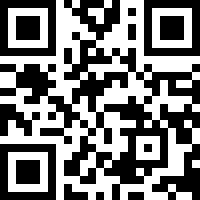Counterfeit and falsified pharmaceuticals are a global public health threat in the pharmaceutical industry. These medications may not only be ineffective, but also harmful— producing negative side effects or even death. Furthermore, these counterfeit pharmaceuticals may be made in different countries — for example, chemical synthesis in one, filler addition in another, and packaging in a third — making them difficult to track and remove from the supply chain.
Counterfeit drugs may be produced in various locations — for example, chemical synthesis in one country, filler addition in another country, and packaging still in another — making them difficult to identify and remove from the supply chain.
The Drug Quality and Security Act (DQSA) was passed into law in November 2013 to combat the spread of counterfeit medications in the United States. Title II of the DQSA lays out the steps for establishing an electronic system to track and identify prescription medications as they are made and dispensed. Manufacturers, repackagers, wholesale distributors, dispensers, and third-party logistics providers are all subject to these rules.
What is Serialization?
Serialization refers to the process of issuing a unique serial number to each saleable unit of a prescription product, which is linked to information about the product’s origin, batch number, and expiration date.
The units can then be traced throughout their full supply chain, from manufacturing through retail distribution and finally to patient dispensation. In November 2017, all prescription medications marketed in the United States must be serialized at both the salable unit and case level, according to the DQSA.
The Process of Serialization
The FDA recommends using standard numerical identifiers (SNIs), in this case, the serialized national drug code (sNDC), which combines the NDC with a unique serial number. Serialization codes can be generated randomly or sequentially by the client or manufacturer. The manufacturer prints a two-dimensional barcode on the label of each saleable unit and shipping case after obtaining the serialization codes.
Each label is scanned by the packaging process to determine which unit goes into which case. Because the labels on the bottles are concealed when they are lowered into the cases, each bottle has a temporary code inscribed in UV ink on the top of its lid (or topsert).
Large distributors anticipate that the FDA will soon demand serialization data collection and verification of which serial numbers were in each bundle, case, and pallet, and ultimately which units were supplied to each store. Manufacturers must aggregate data throughout the process in order to acquire this information without having to reopen every shipping case. This information will subsequently be transmitted electronically in the form of an advance shipping notice (ASN). All parties must keep the data for FDA audits.
By 2023, manufacturers must also establish an electronic system that allows them to track all prescription medicine packages across the full distribution chain.
Information Required in Serialization Program
The information needed for a serialization program is heavily influenced by a variety of regulations and standards. Some or all of the following could be included in typical information:
• The complete ownership information for the supply chain, from the producer to the pharmacy where the prescription drug was given to the patient
• Detailed information, including company, name, and address, for each individual who certified delivery and receipt of the prescription medicine
• The prescription drug’s name, quantity, dose type, and strength
• The date on which each transaction in the distribution was completed
• The sales invoice number(s) per transaction
• The number of containers pe transaction
• The lot/batch number and the expiration dates (s)
• Detailed shipping information
• A certified statement saying that the information is correct and true
How Serialization Improves Supply Chain Security
Serialization, when fully adopted, will improve transparency and visibility by preventing counterfeiting, diversion, and theft. Furthermore, supply chain partners can improve shipment accuracy and remove recalled and defective products more rapidly with the capacity to track product whereabouts.
Regardless of how and when serialization rules are implemented, pharmaceutical manufacturers, distributors, and retailers must be prepared to comply with these technological challenges for the betterment of the entire pharmaceutical industry and society.
Visit IDlogic to learn more about the most advanced anti-counterfeiting solutions.
IDLogiq is made up of a team of deeply committed, with multidisciplinary professionals, which includes healthcare specialists, DSCSA and supply chain experts, advanced security technologists, and more. The team comes together to create a technological and trusted solution to supply chain. IDLogiq’s core mission of helping enterprises combat against counterfeiting all over the world to resolve $1.8 Trillion and 1 million lives lost per year and counting.
IDLogiq team envisions a world free of counterfeit drugs and a global environment working together to optimize business efficiency, maximize business intelligence via the application of our state-of-the-art IDLogiq technology.


